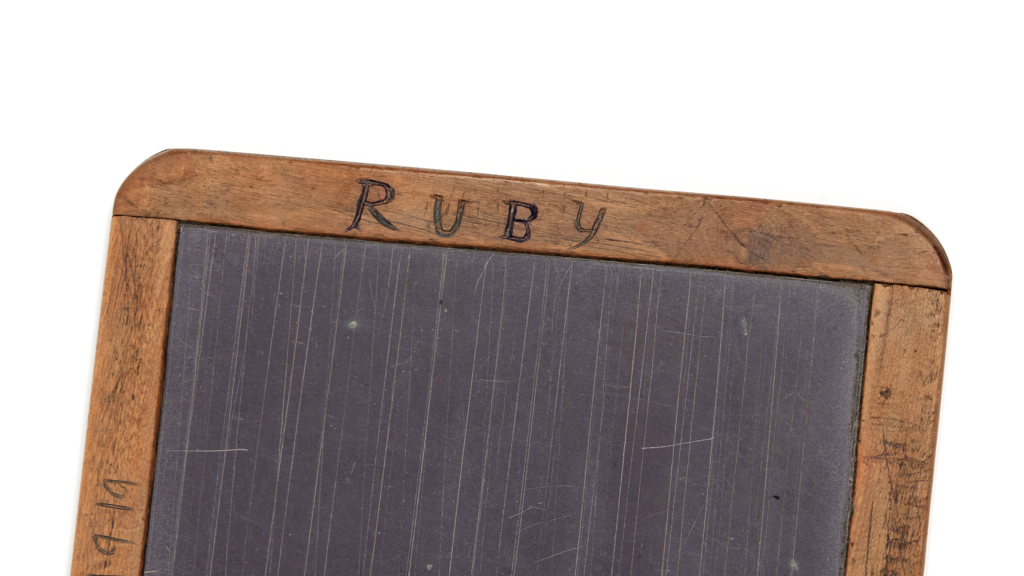
Imagine the scratchy, squeaky sound this slate pencil made against this slate when five-year-old Alice Conway began practicing her writing on it in 1894 in Berry. Amplify that sound, according to the number of children in her school, all writing at different paces and rhythms, and we hear the uncomfortable noise of a typical nineteenth […]
Read More…
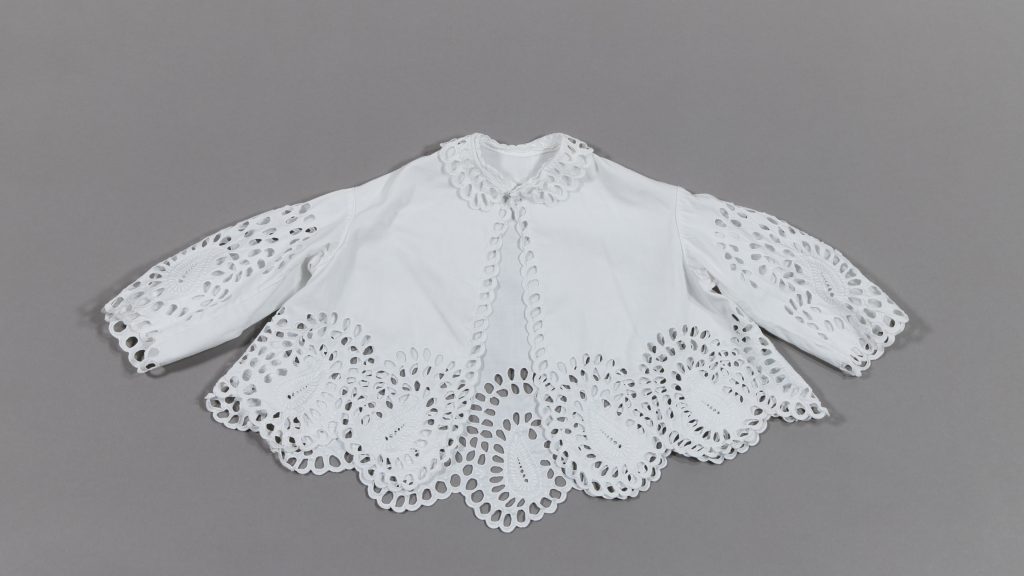
What was thirteen-year-old Irish girl Ann Boyd thinking about as she stood on the deck of the emigrant ship Australia on 8 June 1853, as it sailed into Sydney Harbour and approached Dawes Point to lower its anchor? Accompanied by her parents Mary and Adam, and her eight siblings, Mary might have been impressed by […]
Read More…
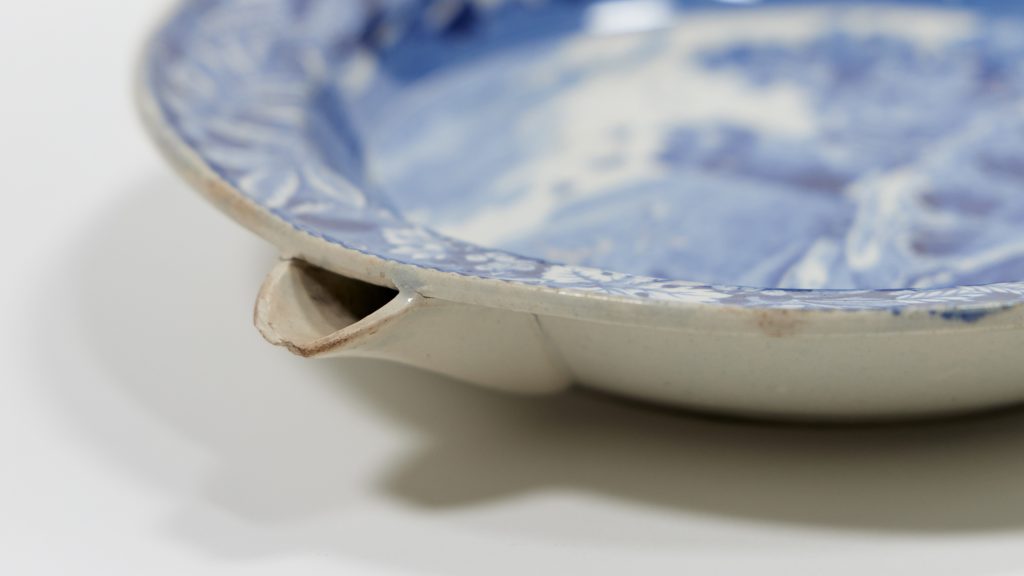
Doris Hogan of Berry must have known this blue and white earthenware dish was old and quite rare, when she generously donated it to the Berry Historical Society in 1979. But what else did she know? Was it just one of those family household objects that is passed on, found left in the kitchen cupboard […]
Read More…
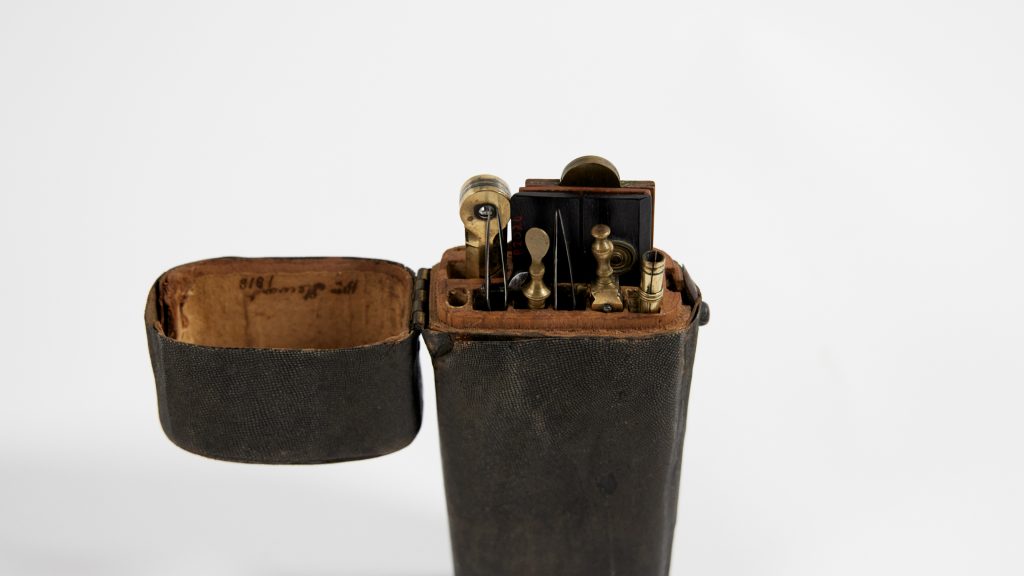
In 1818 William Stewart of Blair Atholl, Scotland picked up his pen, dipped it into an inkwell, and inscribed his name inside the lid of this case of drafting instruments. He was 18 years old. Was it a special gift for graduating or coming of age, or maybe issued to him as a student of […]
Read More…
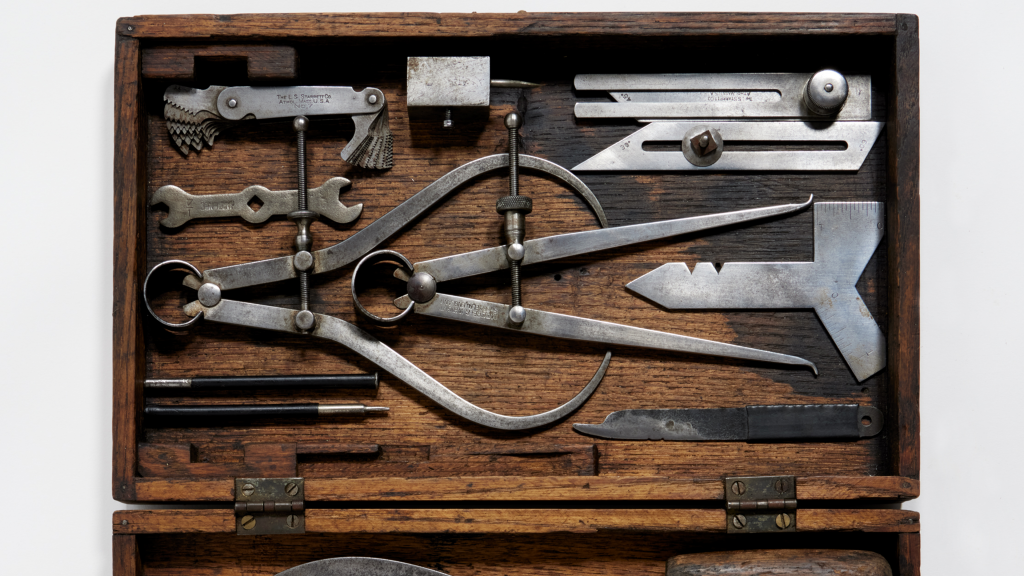
When 22-year-old Leslie Campbell Lupton (born 1896) returned from World War I to his family home in Bondi in 1918, having been shot in the back and had the fingers of his right hand crushed, he must have wondered what sort of occupation he could take up. Before enlisting, he had worked as an insurance […]
Read More…
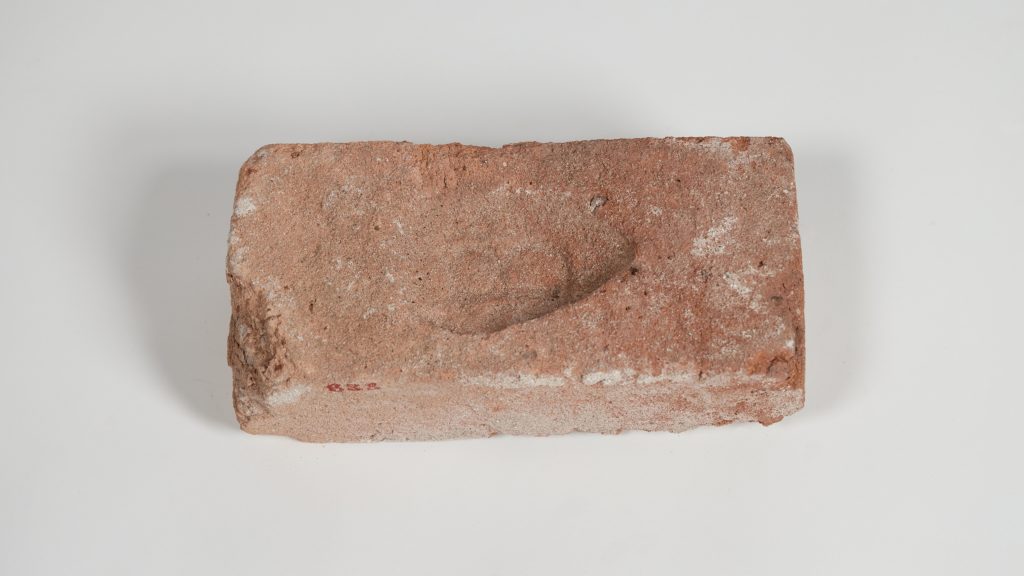
Throwing a handful of sand around the mould, before filling it with several dollops of wet clay, the maker of this sandstock brick knew that the dusty sand would allow the brick to easily slip out. Using the edge of his wooden strike board, he scraped off the excess clay and pressed the heart-shaped ‘frog’ […]
Read More…
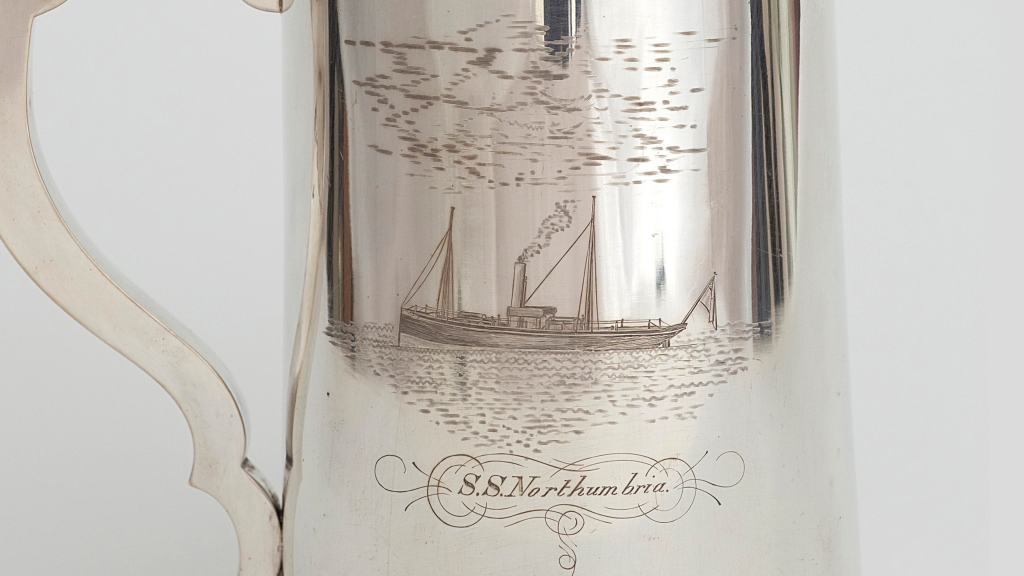
This testimonial tankard represents two business successes for the Sydney merchants Christopher Newton Bros & Co. It is made of silver mined from the Sunny Corner silver mine, near Rydal just west of Lithgow, in which they were the major shareholders. In April 1885, around the time silversmith Evan Jones made this tankard, the mine […]
Read More…
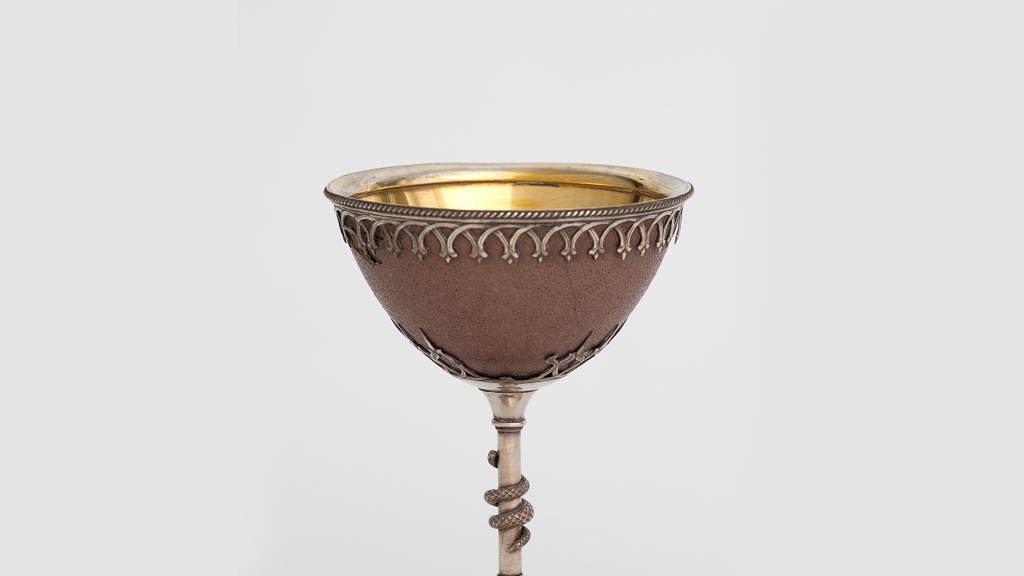
In 1866, the Danish-born silversmith Christian Ludwig Qwist sent a silver-mounted emu egg jug and drinking cups, made in his Hunter Street shop in Sydney, to the Intercolonial Exhibition in Melbourne. Qwist arrived in Melbourne in 1853, in the early years of the gold rush. He’d worked as a photographer and silversmith in the boom […]
Read More…
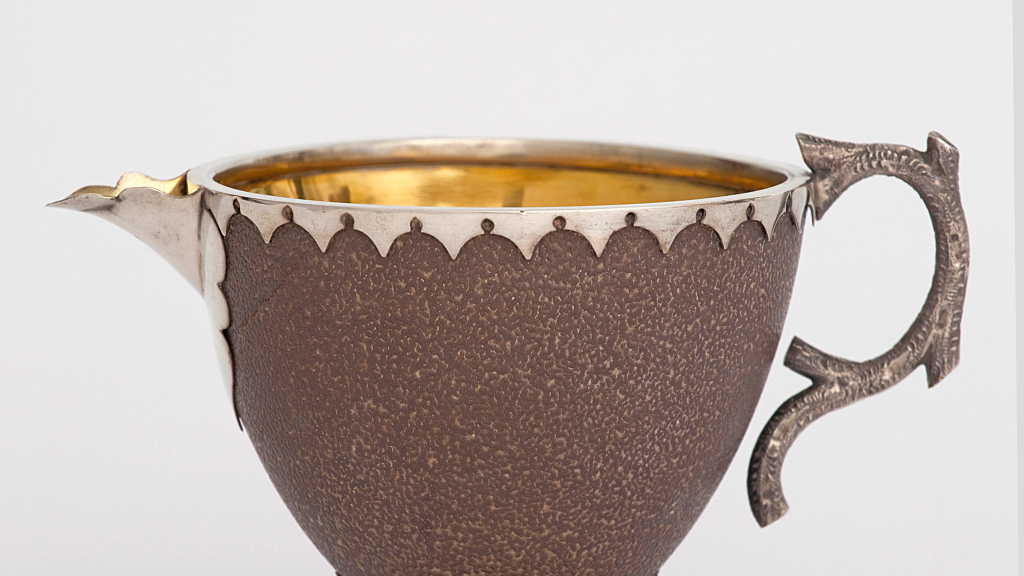
Two emu eggs to make a ‘bachelor tea set’ – one for the teapot, one half for the sugar bowl and the other for the cream jug. Was the cream jug ever used? It’s not likely. The fashion for goblets and cups made from silver mounted emu eggs reached its height in the second half […]
Read More…
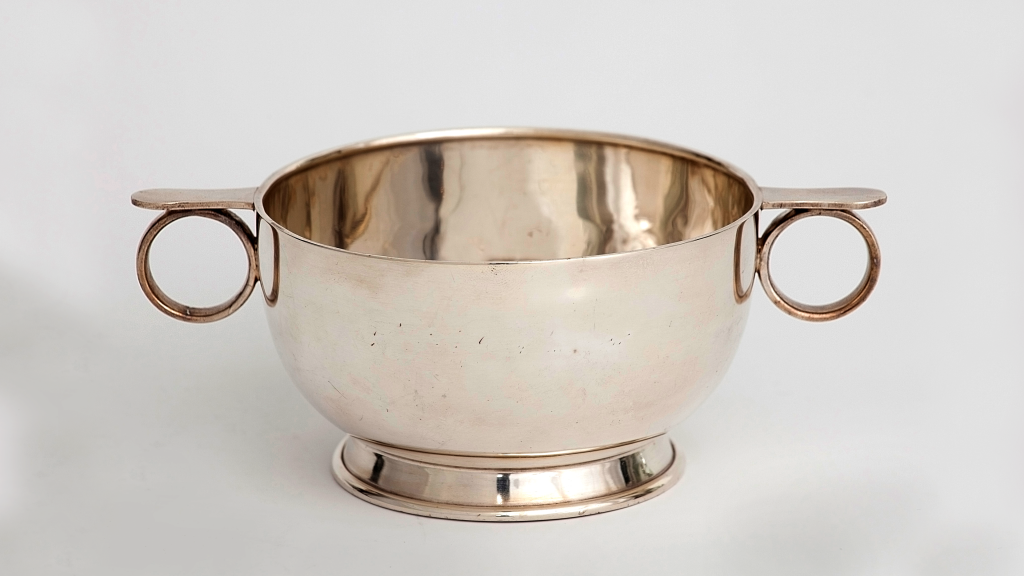
If someone were to politely offer you ‘a little silver porringer of hot terrapin’ would you eagerly accept, respectfully decline, or ask for more information? While such an offer might bewilder contemporary diners, an 1880s gourmet would lick their lips in anticipation of tucking into some creamy turtle soup served in a small silver bowl. […]
Read More…











